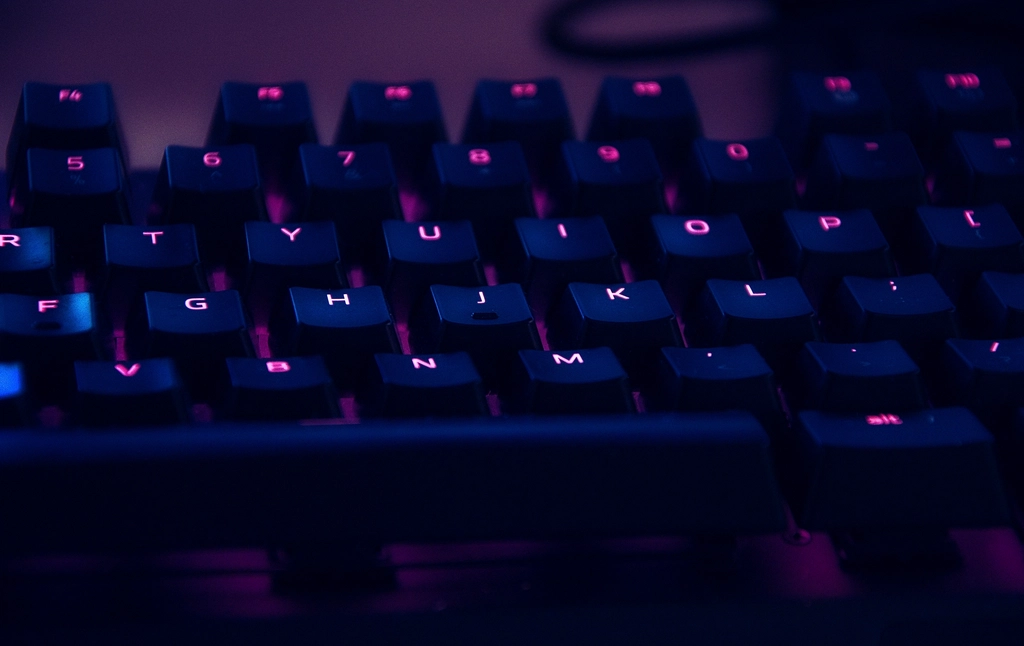
The Dactyl Manuform Keyboard: An Analysis of Barriers to Mass Production
I. Executive Summary
The Dactyl Manuform keyboard, a prominent example of ergonomic innovation within the mechanical keyboard community, presents a unique case study in the challenges of scaling highly customized, open-source hardware. This report analyzes the multifaceted impediments that prevent the Dactyl Manuform from being mass-produced using traditional manufacturing paradigms. The keyboard's foundational principles—extreme personalization through parametric design, an open-source development ethos, complex three-dimensional geometry, and a predominantly do-it-yourself (DIY) assembly process—are fundamentally at odds with the requirements of mass production, which prioritize standardization, high-volume tooling, and automated assembly lines.
Key barriers identified include the prohibitive costs and technical complexities of manufacturing its intricate, contoured shape using conventional methods like injection molding. The labor-intensive nature of its hand-wired assembly further escalates production costs and introduces variability in quality, unsuitable for mass-market expectations. Furthermore, the open-source licenses under which many Dactyl Manuform designs and their generators are distributed, particularly "NonCommercial" clauses for pre-generated models and the copyleft nature of the generator code, pose significant legal and business model challenges for commercial mass production. Finally, the keyboard caters to a niche market segment whose demand, while passionate, is insufficient to justify the substantial upfront investment required for traditional mass manufacturing infrastructure. The Dactyl Manuform's value is intrinsically tied to its bespoke nature, a characteristic that inherently resists the homogenization necessary for large-scale production.
II. The Dactyl Manuform: A Paradigm of Customization, Not Mass Production
The Dactyl Manuform keyboard did not emerge from a corporate R&D lab aiming for broad market appeal; rather, its genesis and evolution are deeply rooted in the open-source hardware community, prioritizing individual ergonomic needs and extensive customization over the prerequisites of mass-market scalability. This inherent design philosophy is the primary reason it remains a product of enthusiasts and small-scale builders rather than large manufacturing operations.
A. Genesis in Open Source and Individualization
The Dactyl Manuform keyboard originated as a community-driven project, designed by Tom Short as a fork of the Dactyl keyboard by Matt Adereth, integrating the thumb cluster from the ManuForm keyboard by Jeff Gran.1 This lineage immediately places it within the realm of open-source hardware, where designs are shared, iterated upon, and adapted by a community of users and developers. Its development was not guided by the constraints of traditional manufacturing but by the pursuit of optimal individual ergonomics. The keyboard was conceived as a highly parameterized design, with its 3D models typically generated by a Clojure program.3 This program allows users to output .scad files, which can then be converted to STL files using OpenSCAD for 3D printing.3
This parametric nature is central to its identity. Aspects such as the number of rows and columns, key spacing, and the precise angles and curvatures of the key wells and thumb clusters are all configurable within the Clojure code.3 Online generators have also emerged, simplifying the customization process for users not wishing to directly edit Clojure code, allowing them to adjust parameters and receive a .scad file.3 This design philosophy inherently prioritizes the ability of an individual to tailor the keyboard to their unique hand geometry and ergonomic preferences 8, a stark contrast to the one-size-fits-many approach of mass-produced goods. The Dactyl Manuform's "product," therefore, can be seen as much as the generator script and the process of personalization as any single physical keyboard instance. Attempting to mass-produce "the" Dactyl Manuform is a conceptual mismatch because there isn't one definitive version; any design chosen for mass production would merely be a snapshot, losing the core value proposition of infinite customizability offered by its generative origins.2
Furthermore, the open-source, community-driven evolution means the design is inherently fluid and constantly forking.1 Users frequently publish their own modifications and improvements.3 This dynamic nature makes the Dactyl Manuform a moving target for any mass-production effort, which typically requires design stability to justify investment in fixed tooling and processes. Committing to mass-produce one variant while the community continues to innovate risks rapid obsolescence of the chosen design.
B. The "Infinitely Variable" Form Factor
The ergonomic goals of the Dactyl Manuform are ambitious, aiming to provide a typing experience that minimizes strain and conforms as closely as possible to the natural posture and movement of the human hand. Key ergonomic features include a split design allowing for shoulder-width hand separation, adjustable tenting (angling the halves upwards towards the center), neutral or negative wrist tilt, deeply contoured "key wells" that follow the varying lengths of the fingers, and highly customizable thumb clusters designed for easy reach without stretching.8
The parametric design, often implemented via Clojure scripts or web-based configurators, empowers users to become active participants in their keyboard's design.4 Users can specify the number of rows (typically 3 to 6) and columns (4 to 7 or more), the curvature of these rows and columns independently, the tenting angle, rotation around the row axis, and even individual key staggering and spacing.4 This results in an almost infinite matrix of potential designs, each with unique 3D geometry tailored to an individual's hands and preferences.9 For instance, one user might prefer a compact 4x5 layout with aggressive curvature for small hands, while another might opt for a larger 6x6 layout with gentler slopes and wider key spacing.17
This approach contrasts with other ergonomic keyboards like the Glove80, which, while also featuring a contoured design, arrived at its shape through extensive empirical testing on a wide range of real people to find a more broadly applicable ergonomic solution.8 The Glove80 team, for example, recognized that simple circular arcs for key columns weren't optimal and instead pursued shapes reflecting the natural multi-segment movement of fingers.8 The Dactyl Manuform, in contrast, puts the power of such geometric decision-making directly into the hands of the end-user or small-scale builder.
This deep individualization, however, creates significant hurdles for mass production. The pursuit of "perfect" individual ergonomics through complex 3D contouring and parameterization inherently leads to designs that are challenging and expensive to produce consistently at scale using traditional manufacturing methods. The more unique and complex the 3D shape, the more intricate and costly the required tooling, such as injection molds, becomes.19 Each significant Dactyl Manuform variant—differing in curvature, row/column count, or overall dimensions—would necessitate its own expensive mold, rendering the high-mix, low-volume nature of its appeal economically unviable for such processes.
Consequently, the very value proposition of a Dactyl Manuform is intrinsically tied to its custom fit. A mass-produced, "one-size-fits-most" Dactyl Manuform would represent a fundamental contradiction. Such a product would likely fail to satisfy the niche enthusiasts who seek perfect personalization and might still be perceived as too extreme, too expensive, or not ergonomic enough for their specific needs compared to less radical, established ergonomic keyboards available on the mass market.22 This creates a difficult position: compromising the customization dilutes its core appeal, while maintaining it makes mass production unfeasible.
III. Manufacturing Realities: Why Traditional Methods Fall Short
The Dactyl Manuform's design philosophy, centered on complex 3D ergonomics and individual customization, dictates its manufacturing methods. These methods, while suitable for enthusiasts and small-batch producers, are antithetical to the principles of traditional mass production, which rely on high-speed, high-volume, and cost-efficient replication of standardized parts.
A. 3D Printing as the Native Production Method
Fused Deposition Modeling (FDM) 3D printing is the predominant method for creating Dactyl Manuform cases.3 This technology is well-suited for the keyboard's characteristics for several reasons: it can produce the complex, organic geometries of the key wells and contoured surfaces without the need for expensive tooling, and it has a low initial setup cost, making it accessible for individual makers and small-scale operations. Common materials include PLA, PETG, and ABS, each with different properties concerning strength, temperature resistance, and ease of printing.26
However, FDM printing presents significant drawbacks when considering mass production. Print times are notoriously slow; a single half of a Dactyl Manuform case can take 16 to 20 hours or even a full day to print.3 This severely limits throughput. Print quality can also be an issue, with visible layer lines, potential for warping (especially with larger parts or materials like ABS), and the necessity for careful calibration to achieve consistent results.27 Post-processing is almost always required, primarily for the removal of support structures, which can be a delicate and time-consuming task, particularly with complex overhangs inherent in the Dactyl design.3 While other 3D printing technologies like Stereolithography (SLA) or Multi Jet Fusion (MJF) can produce parts with a smoother finish and higher detail 9, these methods are generally more expensive in terms of materials and machine operation, and may still not offer the speed required for true mass production volumes.
The reliance on 3D printing is a direct consequence of the Dactyl Manuform's intricate and highly variable design. It is an enabling technology for the enthusiast and custom builder, allowing for the creation of unique, personalized keyboard shells. However, this same reliance forms a fundamental barrier to traditional mass production. The slow speeds, per-unit material costs (which don't decrease significantly with volume in the same way injection molding does after tooling amortization), and quality/consistency challenges of most accessible 3D printing methods are unacceptable for mass-market consumer electronics. Mass-produced keyboards from major brands typically feature injection-molded casings that offer smooth finishes, high durability, and consistent quality 22—standards that are difficult and costly to meet with 3D printing at scale. Achieving injection-mold quality with industrial 3D printing for every unit would render the final product prohibitively expensive for a wider market.
B. The Prohibitive Cost and Complexity of Injection Molding for Dactyl-like Geometries
Injection molding is the cornerstone of mass-producing plastic parts, offering very low per-unit costs at high volumes after an initial, often substantial, investment in tooling (the mold). However, the Dactyl Manuform's characteristic geometry makes it an exceptionally poor candidate for this process.
The primary challenge lies in the keyboard's complex 3D curves and hollows. The concave keywells, varying curvatures across different axes, and overall organic, non-planar shape would necessitate extremely sophisticated molds.19 Such molds would likely require multiple parts, complex sliders and lifters to create undercut features (areas where the mold cannot be pulled away in a simple two-part action), and intricate cooling channels to manage heat dissipation and prevent warping in the complex form.31 The design likely contains numerous undercuts, each adding significantly to mold complexity and cost. Achieving consistent wall thickness and integrating internal mounting features (for switches, microcontrollers, and connectors) within such a complex, hollow shell via injection molding is a significant engineering feat. Ensuring uniform plastic flow and cooling to prevent defects like sink marks, warping, or incomplete fills is also considerably more difficult than with simpler, flatter parts.33
The cost of creating such molds is a major deterrent. For relatively simple parts, molds can cost a few thousand dollars, but for very large or complex molds, costs can escalate to $80,000, $100,000, or even more.19 Given the Dactyl Manuform's geometry, it would undoubtedly fall into the higher end of this cost spectrum. Crucially, each significantly different Dactyl Manuform variant—for example, a 4x5 versus a 5x6 layout, or one with a different tenting angle or keywell curvature that alters the overall shell shape—would effectively require its own unique, expensive mold. This makes it economically impossible to offer the vast customization that is the hallmark of the Dactyl Manuform if relying on injection molding. In contrast, established ergonomic keyboards like the Kinesis Advantage, while also contoured, utilize a more standardized (though still complex) injection-molded shell, allowing them to amortize tooling costs over larger production runs of a consistent design.24
The economic break-even point for injection molding a single Dactyl Manuform design would thus require sales volumes far exceeding the realistic market size for such a highly specialized, niche keyboard. The high non-recurring engineering (NRE) costs for the mold, when spread over a relatively small production run, would result in an excessively high per-unit cost, negating much of the economic advantage of injection molding.
Furthermore, any attempt to simplify the Dactyl Manuform's design to make it more "moldable" (e.g., reducing curvatures, eliminating undercuts, shallowing the key wells) would inherently compromise its core ergonomic appeal and unique selling proposition.8 Such simplification would be necessary to reduce mold complexity and cost 21, but the resulting product might become a "worst of both worlds": not customizable enough for Dactyl enthusiasts and still too unconventional or expensive for the general ergonomic keyboard market.
C. The Bottleneck of Hand-Wiring and Assembly
Beyond the casing, the internal assembly of a Dactyl Manuform presents another major obstacle to mass production. The typical build process involves individually placing each mechanical switch into the 3D-printed case, where they are often just press-fit or sometimes secured with glue.3 Following this, each switch must be meticulously hand-wired into a matrix of rows and columns. This process includes soldering a diode to each switch (to prevent ghosting and enable N-key rollover) and then connecting the rows and columns to the pins of a microcontroller, such as an Arduino Pro Micro or an Elite-C, which runs the keyboard's firmware.3
This hand-wiring process is extremely labor-intensive, time-consuming, and highly prone to errors, especially for less experienced builders.3 Issues like cold solder joints, shorts between wires, incorrect diode orientation, or misconnected matrix lines can lead to malfunctioning keys or entire sections of the keyboard failing, requiring tedious troubleshooting.43 The quality and reliability of a hand-wired keyboard are heavily dependent on the skill and diligence of the assembler.
This contrasts sharply with the assembly of mass-produced keyboards, which almost universally rely on Printed Circuit Boards (PCBs). On a PCB, the electrical connections between switches, diodes (if surface-mounted), and the microcontroller are etched as conductive traces on the board itself. Switches are typically soldered directly to the PCB (often using automated wave soldering or reflow soldering processes for surface-mount components), ensuring consistent, reliable connections and dramatically reducing assembly time and the potential for wiring errors.
While some Dactyl Manuform builders have experimented with or adopted flexible PCBs (flexPCBs) to simplify the wiring process within the curved keywells 45, designing, manufacturing, and implementing flexPCBs that can conform to the myriad of complex 3D contours possible with Dactyl Manuform variations presents its own set of significant challenges and costs.33 A universal flexPCB solution that could accommodate all or even most Dactyl Manuform shapes is unlikely. Therefore, even with flexPCBs, a considerable amount of custom fitting or multiple PCB designs would be necessary, undermining the standardization needed for mass production.
The high degree of variability in quality and reliability inherent in hand-wiring is unacceptable for mass-produced consumer electronics, which are typically sold with warranties and carry customer expectations of consistent performance and durability. The labor cost associated with hand-wiring dozens of switches and diodes for each individual unit would also make a mass-produced Dactyl Manuform prohibitively expensive. This cost would be particularly glaring when compared to PCB-based ergonomic keyboards from competitors, which benefit from highly efficient, automated assembly processes. This substantial labor component, added to potentially high casing costs, would push the final retail price far beyond what the target market would likely bear, especially with established alternatives like the Ergodox EZ or Kinesis Advantage available.24
IV. The Open-Source Double-Edged Sword: Licensing Implications for Commercial Scale
The Dactyl Manuform's open-source nature is a key enabler of its community-driven development and customization. However, the specific licenses under which its design files and generator tools are often distributed present significant, if not insurmountable, hurdles for traditional commercial mass production. These licensing terms, particularly those restricting commercial use, act as a primary gatekeeper, often irrespective of technical or economic feasibility.
A. Understanding the Dactyl Manuform's Licenses
Many Dactyl Manuform projects, notably the influential abstracthat repository on GitHub, employ a dual licensing structure that differentiates between the code used to generate the keyboard models and the pre-generated models themselves.16
- Generator Code (e.g., Clojure scripts): This is frequently licensed under a strong copyleft license such as the GNU Affero General Public License Version 3.0 (AGPL v3.0).16 Key terms of the AGPL v3.0 include the requirement that if the software is modified and then distributed or made available over a network (even as a service), the source code of the modified version must also be made available under the AGPL v3.0.49 For a company looking to mass-produce a Dactyl Manuform, if they were to modify the generator script to create a specific, optimized, or proprietary variant of the keyboard design, they would likely be obligated to release those modifications to the generator script itself. This can be a significant disincentive for commercial entities that wish to protect any proprietary improvements or "secret sauce" developed in their version of the generator.
- Pre-generated Models (e.g., STL files for 3D printing, often found in a things/ directory): These are commonly distributed under a Creative Commons license, specifically the Attribution-NonCommercial-ShareAlike license, such as CC BY-NC-SA 3.0 or 4.0.16 The critical terms of this license are:
- Attribution (BY): Users must give appropriate credit to the original creator(s), provide a link to the license, and indicate if changes were made.55
- NonCommercial (NC): The material may not be used for commercial purposes.55 A commercial use is defined as one primarily intended for commercial advantage or monetary compensation.55
- ShareAlike (SA): If the material is remixed, transformed, or built upon, the resulting derivative works must be distributed under the same or a compatible license.55
The "NonCommercial" (NC) clause is the most immediate and formidable barrier to mass production. The act of manufacturing and selling keyboards on a large scale is unequivocally a commercial activity. Therefore, using STL files licensed under CC BY-NC-SA as the basis for a commercial product would directly violate the terms of the license.54 While some small-scale sellers might operate in a grey area, a large-scale commercial operation would face significant legal risks.
This dual licensing creates a complex compliance landscape. A company wishing to mass-produce Dactyl Manuforms based on these common open-source repositories would face several difficult choices:
- Attempt to negotiate separate commercial licenses for specific pre-generated models. This is often impractical due to the difficulty in identifying all rights holders in a distributed, community-developed project and the lack of a clear mechanism for such licensing.
- Use the AGPL-licensed generator to create new models. While this bypasses the NC restriction on the pre-generated STLs, the company must then comply with the AGPL for any modifications made to the generator software itself if they distribute the resulting product (which embodies the output of the generator) or offer services based on the modified generator.51
- Design a "Dactyl-inspired" keyboard entirely from scratch to ensure full ownership of the intellectual property. At this point, the product is arguably no longer a "Dactyl Manuform" in the open-source sense, but a new proprietary design.
The "NonCommercial" clause acts as a powerful deterrent for any significant investment in mass production infrastructure, as the fundamental business model of such an endeavor is commercial. It effectively reserves the Dactyl Manuform, as defined by those specific CC BY-NC-SA licensed models, for hobbyists, personal use, and non-profit activities. This licensing constraint is often more fundamental than technical or economic challenges for those particular designs; even if a model were perfectly manufacturable and economically viable, the NC clause would prevent its legal commercial sale at scale without a change in licensing.
B. Navigating Open-Source for Commercial Products: Challenges and Common Approaches
The commercialization of Open Source Hardware (OSH) in general faces several inherent challenges beyond specific licensing terms. These include maintaining quality control when designs can be freely modified and manufactured by anyone, the lack of dedicated technical support (relying instead on community forums), potential intellectual property concerns if designs inadvertently infringe on existing patents (though licenses aim to clarify rights), and the fundamental difficulty of establishing a sustainable business model when the core designs are available for free.60 CE certification for OSH products sold in the European Economic Area can also be complex due to the potential for user modifications and part substitutions.61
Common strategies for businesses operating in the OSH space include selling kits of parts for DIY assembly 17, providing fully assembled products (often by small vendors at a premium price reflecting low-volume production and manual labor) 9, or selling services, expertise, and accessories around the core OSH project.62 Many individuals who build and sell Dactyl Manuforms or similar custom keyboards do so as a hobby or a small side-business, often not achieving significant profit margins once labor is factored in.68
This contrasts with companies like ZSA Technology Labs (makers of the Ergodox EZ, Moonlander, and Voyager keyboards). While ZSA leverages open-source firmware like QMK and ZMK, providing users with powerful customization tools 46, their hardware designs (casings, PCBs) are proprietary or at least not encumbered by NonCommercial restrictions for the physical product itself.71 This allows them to invest in tooling, manufacturing at scale (in Taiwan by fairly paid employees 46), quality assurance, and international certifications (like CE and FCC 70), and then sell the physical keyboards commercially worldwide. The Dactyl Manuform's challenge is that the hardware design files themselves often carry the NC restriction, unlike ZSA's approach where the open-source element is primarily the firmware.
The Dactyl Manuform ecosystem, therefore, primarily supports a "maker" or "artisan" economy. Small-scale builders and kit sellers can thrive by offering high degrees of customization and catering to individual preferences.9 This model aligns well with the open-source ethos of sharing and modification, and the typical skills involved (3D printing, soldering, firmware flashing) are common in the maker community.3 However, this is distinct from an industrial mass-production economy, which demands large capital investments, standardized designs, and business models incompatible with NC licenses or constantly evolving open designs.
A large manufacturer attempting to enter the Dactyl Manuform market with a mass-produced version would face an unusual competitive landscape. They would be competing against a decentralized network of these small builders who can offer greater customization, potentially have lower overheads for very small batches, and are already serving the existing niche market. These small sellers may also operate under less stringent scrutiny regarding the strict interpretation of "NonCommercial" licensing for individual sales compared to what a major corporation would face. To succeed, a mass producer would need to offer a compelling price advantage or unique features not easily replicated by DIY builders, a difficult proposition given the inherent costs of traditionally manufacturing the Dactyl's complex shape and the inability to match the bespoke nature of custom builds.
V. Market Dynamics and Economic Viability
Beyond the technical and licensing hurdles, the Dactyl Manuform's path to mass production is further complicated by market dynamics and fundamental questions of economic viability. The keyboard's unique characteristics appeal to a specific, limited audience, and its value proposition is not easily translated to a mass-market context.
A. Niche Demand vs. Mass Market Appeal
The market for ergonomic keyboards is a growing segment within the broader computer peripherals industry, driven by increasing awareness of repetitive strain injuries (RSIs) and the desire for greater comfort during prolonged computer use.72 However, the Dactyl Manuform caters to an even smaller, more specialized sub-niche within this ergonomic segment. Its users are typically those who require or desire extreme levels of customization, deep 3D keywell contouring, and are often comfortable with a DIY approach or a highly technical product experience.13
Many potential users of ergonomic keyboards may not even be aware of designs as specialized and unconventional as the Dactyl Manuform.76 The demand is primarily driven by individuals with specific, often acute, ergonomic needs, such as those suffering from carpal tunnel syndrome or other RSIs, or by keyboard enthusiasts pursuing the pinnacle of personalized ergonomic optimization.75 This highly specific and informed user base, while passionate, is limited in size. Such niche demand struggles to generate the sales volumes necessary to achieve the economies of scale that underpin mass production. Mass production investments are typically directed towards products with broader appeal, targeting larger and less specialized market segments. The Dactyl Manuform's appeal lies precisely in its specialization, a characteristic that makes it inherently less suitable for a mass-market strategy.
The target user for a Dactyl Manuform is often highly informed about keyboard ergonomics and values specificity and customizability above mass-market polish or brand recognition.4 This demographic may even be wary of a "mass-produced" version if it entails sacrifices in the level of personalization or the unique characteristics that drew them to the Dactyl concept in the first place. The economic model that best describes the Dactyl Manuform market is akin to a "long tail," where there are many distinct variations (due to the parametric generator), each with a small demand, rather than a large demand for a few standardized products. This market structure is ideal for additive manufacturing and DIY approaches but is fundamentally misaligned with the economic imperatives of traditional mass production, which thrives on high-volume output of identical items to distribute fixed costs like mold tooling.19
B. Price Point Justification and Perceived Value
Currently, Dactyl Manuform keyboards are available as DIY kits or fully assembled units from small builders and specialized vendors. Prices typically range from around $150 for a basic kit to $300-$500 or even more for a pre-built, customized version.30 This pricing reflects the costs associated with low-volume production: the expense of 3D printing (either in-house or outsourced), the sourcing of components in small quantities (switches, microcontrollers, keycaps, etc.), and, crucially, the significant manual labor involved in hand-wiring and assembly.17
A mass-produced Dactyl Manuform would face the challenge of justifying its price point against both existing custom offerings and more conventional mass-market ergonomic keyboards. To be competitive, it would need to offer either a significantly lower price or substantially more value (e.g., superior build quality, enhanced features, comprehensive warranty and support). However, achieving a dramatically lower price through mass production is difficult. As discussed previously, the complex physical form of the Dactyl Manuform means that even if manufactured using traditional methods like injection molding, the casing would be expensive to tool. Specialized assembly, even if partially automated with custom PCBs, would still likely be more complex than for flatter keyboards.
This could place a mass-produced Dactyl Manuform in an "uncanny valley" of pricing: potentially too expensive for casual ergonomic users, who can opt for more affordable (though less contoured) ergonomic keyboards from brands like Microsoft or Logitech 22, and not customizable enough for the hardcore enthusiasts who are currently willing to pay a premium for a bespoke product tailored to their exact specifications or who prefer the satisfaction of building it themselves. The core perceived value of the Dactyl Manuform lies in its extreme ergonomic customization and the promise of a perfect individual fit.9 If a mass-produced version standardizes the design to achieve manufacturing scale, this key value proposition is diluted, making it less attractive to its primary current audience, even if offered at a somewhat lower price than a fully custom build. The intangible benefits of personalized comfort and pain reduction are difficult to scale and quantify in a way that justifies the massive investment required for mass production, especially when compared to products that can market more easily demonstrable technological features.
C. The "Good Enough" Factor of Existing Mass-Produced Ergonomic Keyboards
The ergonomic keyboard market is not a vacuum. Several established companies already offer a variety of mass-produced ergonomic keyboards that cater to a significant portion of users seeking improved comfort and reduced strain. Brands like Kinesis with its Advantage series 24, ZSA Technology Labs with the Ergodox EZ, Moonlander, and Voyager 46, Microsoft with its Sculpt and Natural keyboard lines 22, and Logitech with products like the Ergo K860 22 provide a range of options. These keyboards, while perhaps not offering the same depth of 3D contouring or the granular level of physical customization as a Dactyl Manuform, successfully address the ergonomic needs of a large segment of the market. They are widely available, often at more accessible price points than custom-built Dactyls, and come with the backing of established brands, including warranties, customer support, and a certain level of trust and familiarity.72
This existing competition significantly reduces the untapped market potential for a mass-produced Dactyl Manuform. For many users, the ergonomic benefits offered by these "good enough" alternatives are sufficient. The incremental ergonomic improvement that a standardized, mass-produced Dactyl Manuform might offer over, say, a Kinesis Advantage, may not be perceived as significant enough by the average consumer to justify a potentially higher price, a more radical design, or the steeper learning curve associated with such a deeply contoured and often ortholinear layout.13
Mass-market adoption typically favors familiarity and incremental improvements over radical departures from convention.76 Most computer users are accustomed to traditional flat, staggered keyboards; even transitioning to a basic split or tented ergonomic keyboard is a considerable step for many. The Dactyl Manuform, with its deep key wells and highly opinionated columnar layout, represents a much more significant departure and can require a substantial adaptation period. Mass manufacturers tend to invest in designs that have broader appeal and a gentler adoption curve to maximize sales volume and minimize the need for extensive user education. The Dactyl Manuform's current reputation as a DIY or enthusiast-focused product further cements its niche status, making it a challenging proposition to reposition as a mainstream offering without significant marketing and educational efforts, which would add further to the costs and risks of market entry.
VI. Case Studies in Contrast: How Other Ergonomic Keyboards Achieve Scale
To better understand the Dactyl Manuform's unsuitability for mass production, it is instructive to examine how other complex ergonomic keyboards have achieved manufacturing scale. Companies like Kinesis Corporation and ZSA Technology Labs have successfully brought highly ergonomic, albeit differently designed, keyboards to a broader market by making specific choices regarding design standardization, manufacturing processes, and business models.
A. Kinesis Advantage Family (Advantage, Advantage2, Advantage360)
The Kinesis Advantage line of keyboards has been a mainstay in the ergonomic market for over 25 years.24 These keyboards are renowned for their patented contoured keywells, split layout, and vertically arrayed thumb clusters, designed to reduce hand and finger extension and promote a more natural typing posture.24
Kinesis achieves production scale primarily through the use of injection-molded plastic shells for the main keyboard casing and keywells.34 While the Advantage's shape is complex and contoured, it is a standardized design that has seen iterative refinements rather than wholesale changes in its core geometry across generations.24 This standardization allows Kinesis to invest in the expensive tooling required for injection molding and amortize these costs over many thousands of units produced over many years. The switches (typically Cherry MX mechanical switches) are mounted onto PCBs (Printed Circuit Boards) housed within these keywells.34 This PCB-based assembly is far more scalable and reliable than the hand-wiring typical of Dactyl Manuforms. Kinesis also uses keycaps specifically designed or selected to fit the contours of their keywells, sometimes involving different profiles or custom molding, indicating a further investment in specialized tooling or sourcing.34 The Advantage2, for example, is proudly hand-assembled in the USA using premium components, suggesting a focus on quality control within their established manufacturing process.83
The Kinesis approach demonstrates that manufacturing contoured ergonomic keyboards at scale is possible, but it requires a commitment to a fixed, albeit sophisticated, physical design. They trade the infinite physical customizability of the Dactyl Manuform's generative approach for the ability to use scalable manufacturing techniques like injection molding and PCB assembly. Kinesis's long market presence and its historical focus on addressing the needs of users with RSIs, as well as corporate and professional clients, have allowed the company to build a brand reputation and sales volume sufficient to sustain the significant R&D and tooling investments required for their specialized manufacturing process.24 A new entrant attempting to mass-produce a Dactyl Manuform would lack this established market pathway and brand trust for a product with an even more radical and variable form factor.
B. ZSA Technology Labs (Ergodox EZ, Moonlander, Voyager)
ZSA Technology Labs has carved out a significant niche in the ergonomic keyboard market with products like the Ergodox EZ, Moonlander, and Voyager.46 Their approach to achieving scale with ergonomic keyboards differs from Kinesis and highlights other contrasts with the Dactyl Manuform.
ZSA's keyboards are split and offer various ergonomic features like columnar layouts and tenting options, but generally feature less extreme 3D contouring in the primary key areas compared to the deep wells of the Dactyl Manuform or Kinesis Advantage. This makes the manufacturing of their casings—likely through injection molding given their production volumes and quality—more straightforward and cost-effective. A cornerstone of ZSA's products is their robust PCB-based construction, universally featuring hot-swappable switch sockets.46 This allows users to easily change switches without soldering, a key customization feature that doesn't complicate the core manufacturing process.
A critical component of ZSA's value proposition is their powerful, web-based graphical configurator called Oryx.46 Oryx allows users to extensively customize key mappings, layers, macros, and other firmware features for the open-source QMK (and ZMK for wireless models) firmware that powers their keyboards. ZSA manages to scale production by focusing on well-engineered, standardized physical hardware (manufactured in Taiwan by fairly paid employees with benefits 46) and then offering deep personalization through this sophisticated software interface. This effectively separates the complexities of physical manufacturing from the user's desire for individual customization.
ZSA's business model successfully leverages open-source firmware as a powerful feature and a tool for community engagement. However, they maintain control over their hardware designs and manufacturing IP.70 While the original ErgoDox design was open source, ZSA's commercial versions (Ergodox EZ, Moonlander) are their own engineered products. This allows them to commercially produce and sell the hardware globally without being encumbered by the "NonCommercial" or restrictive hardware copyleft licenses that affect many Dactyl Manuform design files. They invest in aspects typical of a commercial hardware enterprise, such as custom tooling for their Change-It-Yourself (CIY) hotswap system 87, quality assurance (they test every key on every unit 46), and regulatory certifications like CE and FCC.70
The success of ZSA demonstrates a viable path for scaling highly customizable ergonomic keyboards: standardize the physical hardware to enable efficient manufacturing, and then provide extensive personalization through user-friendly firmware configuration tools. This model is not directly applicable to the Dactyl Manuform, where the physical form itself is the primary locus of customization.
Comparative Analysis: Dactyl Manuform vs. Mass-Produced Ergonomic Keyboards
To further illustrate these differences, the following table provides a comparative analysis:
| Feature | Dactyl Manuform (Typical DIY/Small Builder) | Kinesis Advantage Series | ZSA Ergodox EZ / Moonlander |
| Primary Case Manufacturing | 3D Printing (FDM, SLA, MJF) 3 | Injection Molding 35 | Injection Molding (likely) / Machined components |
| Case Material(s) | PLA, PETG, ABS, Resin 9 | ABS Plastic 35 | High-quality plastics, metals (e.g., for Moonlander legs) |
| Electronics Assembly | Hand-wiring, optional flexPCBs 3 | PCB-based, hand-assembled in USA 83 | PCB-based, hot-swap sockets 46 |
| Core Design Philosophy | Extreme individual ergonomic customization via parametric generation 3 | Standardized contoured design for broad ergonomic benefit 24 | Standardized hardware, extensive firmware customization 47 |
| Customization (Hardware Shape) | Highly variable (rows, columns, curves, angles) 4 | Fixed contoured shape 36 | Fixed shape, modular elements (e.g., tenting legs) 81 |
| Customization (Firmware/Layout) | High (QMK/ZMK, direct code/config editing) 3 | Moderate (Onboard SmartSet, limited QMK on some mods) 24 | Very High (Oryx graphical configurator for QMK/ZMK) 47 |
| Open Source Licensing (Hardware Design Files) | Often CC BY-NC-SA for models; AGPL for generator 16 | Proprietary | Proprietary (though inspired by open ErgoDox concept) 71 |
| Open Source Licensing (Firmware) | QMK/ZMK (GPL/MIT/Apache typical) 3 | Proprietary (SmartSet), QMK possible with mods 24 | QMK/ZMK (GPL/MIT/Apache typical) 47 |
| Typical Price Range | $150 - $500+ (DIY/Custom) 30 | $350 - $450+ 24 | $300 - $400+ 46 |
| Production Scalability | Very Low (Individual/Small Batch) | High (Mass Production) | Medium to High (Scaled Batch Production) |
| Target Audience | DIY Enthusiasts, Extreme Ergonomic Seekers, Tinkerers 13 | Professionals, RSI Sufferers, Ergonomic-conscious users 75 | Tech Professionals, Programmers, Writers, Gamers 47 |
This comparison underscores that while all three aim to provide ergonomic benefits, their approaches to design, manufacturing, customization, and licensing lead to vastly different scalability potentials. The Dactyl Manuform excels in ultimate personalization at a small scale, whereas Kinesis and ZSA have found ways to bring sophisticated ergonomic keyboards to a larger market by standardizing key aspects of the physical hardware.
VII. Conclusion: The Dactyl Manuform as a Bespoke Artifact, Not a Mass Commodity
The Dactyl Manuform keyboard stands as a testament to the power of open-source collaboration and the pursuit of individualized ergonomic perfection. However, its very essence—rooted in unparalleled customizability through parametric generation, its reliance on accessible yet slow 3D printing for case production, its intricate and labor-intensive hand-assembly process, and the often restrictive nature of its open-source licensing for commercial applications—positions it firmly as an object of craft and personal adaptation, rather than a candidate for mass consumption via traditional manufacturing channels.
The technical, economic, and legal hurdles preventing the Dactyl Manuform's mass production are not isolated issues but are deeply interconnected, all stemming from its core design philosophy that prioritizes the unique needs of the individual user above all else.
The complex, three-dimensional contours that provide its exceptional ergonomics are precisely what make it extraordinarily expensive and challenging to tool for injection molding, the standard for high-volume plastic casing production.19 Each significant variation in its form would necessitate a new, costly mold, a prospect untenable for a product with such a wide array of potential configurations catering to a niche market.
The hand-wired assembly, while allowing for flexibility in layout and component choice for DIY builders, introduces significant labor costs and quality control challenges that are incompatible with the efficiencies and consistency demanded by mass production.3 While flexible PCBs offer a partial simplification, they do not fully resolve the complexity of wiring a deeply contoured, variable shape at scale.33
Furthermore, the open-source licenses commonly associated with Dactyl Manuform designs, particularly the Creative Commons NonCommercial clause for pre-generated 3D models 16, and the strong copyleft provisions of the AGPL for the generator code 16, create substantial barriers for commercial entities looking to invest in mass production. These licenses encourage sharing and modification within the community but inherently restrict or complicate large-scale commercial exploitation.
The Dactyl Manuform represents a peak of personalization in keyboard ergonomics, but this zenith is achieved by consciously or unconsciously sacrificing scalability. It operates on a different axis of value compared to mass-produced goods, where standardization is a prerequisite for affordability and widespread availability. While the Dactyl Manuform is a triumph of community-driven innovation and a boon for those seeking a deeply tailored typing experience, these same characteristics render it fundamentally unsuited to the methodologies and economic models of mass production.
It is therefore likely that the Dactyl Manuform will continue to thrive in the domain of dedicated enthusiasts, DIY builders, and small-scale custom shops. These individuals and small businesses are better equipped to handle the low-volume, high-mix nature of its production, catering to the specific and diverse needs of its passionate user base. The future for broader accessibility of Dactyl-like ergonomics may not lie in mass-producing a single, standardized Dactyl Manuform, but rather in the continued evolution of sophisticated generative design tools coupled with more accessible, faster, and cost-effective custom manufacturing services (such as advanced 3D printing farms or on-demand flexible PCB fabrication). This would effectively scale the customization process itself, allowing more individuals to obtain a bespoke ergonomic keyboard, albeit still distinct from the traditional concept of mass-producing identical physical units. However, even this path would require careful navigation of, or deviation from, the existing open-source licensing frameworks if commercial viability at any significant scale is a goal.
Quote:
- www.reddit.com, https://www.reddit.com/r/MechanicalKeyboards/comments/71f4j0/dactylmanuform_keyboard/#:~:text=This%20keyboard%20was%20designed%20by,ManuForm%20keyboard%20by%20Jeff%20Gran.
- Dactyl-ManuForm Keyboard : r/MechanicalKeyboards - Reddit, https://www.reddit.com/r/MechanicalKeyboards/comments/71f4j0/dactylmanuform_keyboard/
- Dactyl Manuform build log - Jacek Fedoryński's blog, https://blog.jfedor.org/2020/11/dactyl-manuform-build-log.html
- Dactyl Generator, https://ryanis.cool/dactyl/
- yejianfengblue/dactyl-generator-demo: This shows how dactyl generator (https://dactyl.mbugert.de/) parameters work - GitHub, https://github.com/yejianfengblue/dactyl-generator-demo
- rianadon/dactyl-configurator: Generate Dactyl keyboard designs from your browser. - GitHub, https://github.com/rianadon/dactyl-configurator
- I built an online Dactyl Generator, but with fast previews and STL export - Reddit, https://www.reddit.com/r/ErgoMechKeyboards/comments/11pb0b5/i_built_an_online_dactyl_generator_but_with_fast/
- Glove80 Ergonomic Keyboard Design Journey (Part 1) - MoErgo, https://www.moergo.com/pages/glove80-ergonomic-keyboard-design-journey-1
- Ordering a Custom Built Dactyl Manuform Keyboard - Craig Andrews, https://candrews.integralblue.com/2023/09/ordering-a-custom-built-dactyl-manuform-keyboard/
- Dactyl Manuform 5x6 by jfedor | Download free STL model - Printables.com, https://www.printables.com/model/133146-dactyl-manuform-5x6
- "dactyl" 3D Models to Print - Yeggi, https://www.yeggi.com/q/dactyl/
- Inspiration and Credits - Cosmos Keyboard Generator 2025, https://ryanis.cool/cosmos/docs/credits/
- The Dactyl-ManuForm Keyboard - Hacker News, 2025, https://news.ycombinator.com/item?id=23444813
- Ergonomics of dactyl manuform compared to kinesis 2 : r/ErgoMechKeyboards - Reddit,, https://www.reddit.com/r/ErgoMechKeyboards/comments/umg2j5/ergonomics_of_dactyl_manuform_compared_to_kinesis/
- Review: Dactyl Manuform – an ergonomic, custom built mechanical keyboard - Ben Frain, https://benfrain.com/review-dactyl-manuform-an-ergonomic-custom-built-mechanical-keyboard/
- abstracthat/dactyl-manuform - GitHub, https://github.com/abstracthat/dactyl-manuform
- Dactyl Manuform Keyboard Kit - DIY Keyboards, https://www.diykeyboards.com/keyboards/keyboard-kits/product/dactyl-manuform-kit
- custom dactyl manuform shop : r/ErgoMechKeyboards - Reddit, https://www.reddit.com/r/ErgoMechKeyboards/comments/1c4cb7w/custom_dactyl_manuform_shop/
- How Much Does Injection Molding Cost? - Rex Plastics, https://rexplastics.com/plastic-injection-molds/how-much-do-plastic-injection-molds-cost
- Understand Injection Molding Cost and How to Estimate It - boyi technology, https://www.boyiprototyping.com/injection-molding-guide/injection-molding-cost/
- Plastic injection molding cost - EuroPlas, https://europlas.com.vn/en-US/blog-1/plastic-injection-molding-cost
- Microsoft Ergonomic Keyboard for Business - Wired - Black - Amazon.com, https://www.amazon.com/Microsoft-Natural-Ergonomic-Keyboard-Business/dp/B079YZHFL1
- Microsoft Sculpt Ergonomic Keyboard for Business. Wireless , Comfortable, Ergonomic Keyboard with Split Design and Palm Rest. Separate Number Pad Included - Amazon.com, https://www.amazon.com/Microsoft-Ergonomic-Keyboard-Business-5KV-00001/dp/B00CYX26BC
- Advantage2 Wired Ergonomic Keyboard for Mac & PC - Kinesis, https://kinesis-ergo.com/shop/advantage2/
- Building a Dactyl Keyboard from scratch | Andrew Klotz, https://klotzandrew.com/blog/building-a-dactyl-keyboard-from-scratch/
- Dactyl-ManuForm keyboard build - Geekhack, https://geekhack.org/index.php?topic=88576.95;wap2
- Dactyl Manuform PLA Print Settings : r/ErgoMechKeyboards - Reddit, https://www.reddit.com/r/ErgoMechKeyboards/comments/1afrvbi/dactyl_manuform_pla_print_settings/
- A modern handwiring guide - stronger, cleaner, easier - Geekhack, https://geekhack.org/index.php?topic=87689.0
- Custom Kinesis Curved Split Keyboard Kit 2.4GWireless Hot Plug Split Ergo Keyboard Kit Layout Prog Rammable VIA Key Fdm 3D Print - AliExpress, https://www.aliexpress.com/item/1005007580111894.html
- Custom Dactyl Manuform - Cyboard, https://cyboard.digital/products/custom-dactyl-manuform
- Complete Costs of Injection Molding Design, DFM Engineering ..., https://www.cadcrowd.com/blog/complete-costs-of-injection-molding-design-dfm-engineering-rates-manufacturing-pricing-for-cad-services/
- 10 Factors That Impact the Injection Mold Cost - Crescent Industries, https://www.crescentind.com/10-factors-that-impact-injection-molding-tooling-costs
- The early days of Keykrush ORCA - Keyboard Builders' Diges, https://kbd.news/The-early-days-of-Keykrush-ORCA-2596.html
- Kinesis always keeps me coming back, Advantage 360 is peak Ergomech - Reddit, https://www.reddit.com/r/ErgoMechKeyboards/comments/1azhwda/kinesis_always_keeps_me_coming_back_advantage_360/
- Kinesis Advantage is a $300 plastic piece of SH1T!! - Geekhack, https://geekhack.org/index.php?topic=25925.0
- How hard is it to get used to the Kinesis Advantage keyboard? - Quora, https://www.quora.com/How-hard-is-it-to-get-used-to-the-Kinesis-Advantage-keyboard
- Building a Dactyl Manuform keyboard with hot-swappable sockets, https://arnmk.com/building-a-dactyl-manuform-with-hot-swappable-sockets/
- How to build a Dactyl Manuform? : r/ErgoMechKeyboards - Reddit, https://www.reddit.com/r/ErgoMechKeyboards/comments/1aqkiv6/how_to_build_a_dactyl_manuform/
- Build log for a Dactyl Manuform split, ergonomic keyboard - jonamiki.com, https://jonamiki.com/2022/05/21/build-log-for-a-dactyl-manuform-split-ergonomic-keyboard/
- Hand-Wiring Guide | QMK Firmware, https://docs.qmk.fm/hand_wire
- Dactyl-Manuform/README.md at devel - GitHub, https://github.com/20lives/Dactyl-Manuform/blob/devel/README.md
- dactyl-manuform/guide/README.org at master - GitHub, https://github.com/abstracthat/dactyl-manuform/blob/master/guide/README.org
- Handwired keyboard build help : r/ErgoMechKeyboards - Reddit, https://www.reddit.com/r/ErgoMechKeyboards/comments/16mmcuv/handwired_keyboard_build_help/
- Help with wiring and flashing 5x7 dactyl manu - Geekhack, https://geekhack.org/index.php?topic=111427.0
- Dactyl Manuform Build Guide (hot-swappable, with flex PCB and mill-max sockets) - Reddit, https://www.reddit.com/r/ErgoMechKeyboards/comments/106c9y4/dactyl_manuform_build_guide_hotswappable_with/
- FAQ - ErgoDox EZ, https://ergodox-ez.com/faq
- ErgoDox EZ: An Incredible Mechanical Ergonomic Keyboard | ErgoDox EZ, https://ergodox-ez.com/
- dactyl-manuform/LICENSE at master · abstracthat/dactyl-manuform, https://github.com/abstracthat/dactyl-manuform/blob/master/LICENSE
- GPLv3 explained · GitHub - GitHub Gist, https://gist.github.com/kn9ts/cbe95340d29fc1aaeaa5dd5c059d2e60?permalink_comment_id=3706794
- The GNU General Public License v3.0 - GNU Project - Free Software Foundation, https://www.gnu.org/licenses/gpl-3.0.html
- GNU General Public License | GPLv3 explained - Snyk, https://snyk.io/articles/what-is-gpl-license-gplv3-explained/
- GPLv3 explained - GitHub Gist, https://gist.github.com/kn9ts/cbe95340d29fc1aaeaa5dd5c059d2e60
- dactyl-manuform/LICENSE-models at master - GitHub, https://github.com/abstracthat/dactyl-manuform/blob/master/LICENSE-models
- Dactyl Manuform Licensing for sale : r/ErgoMechKeyboards - Reddit, https://www.reddit.com/r/ErgoMechKeyboards/comments/xnoe0f/dactyl_manuform_licensing_for_sale/
- Deed - Attribution-NonCommercial-ShareAlike 4.0 International - Creative Commons, https://creativecommons.org/licenses/by-nc-sa/4.0/deed.en
- Legal Code - Attribution-NonCommercial-ShareAlike 4.0 International - Creative Commons, https://creativecommons.org/licenses/by-nc-sa/4.0/legalcode.en
- Recommended practices for attribution - Creative Commons Wiki, https://wiki.creativecommons.org/wiki/Recommended_practices_for_attribution
- Creative Commons Attribution-NonCommercial-ShareAlike 4.0 International Public License (CC BY-NC-SA 4.0) - DigitalCommons@UNL, https://digitalcommons.unl.edu/parasittext/7/
- Can someone please explain the Attribution-NonCommercial-ShareAlike 4.0 International license to me? : r/creativecommons - Reddit, https://www.reddit.com/r/creativecommons/comments/p4prkh/can_someone_please_explain_the/
- Open Source Hardware Platforms: Pros, Cons & Examples - E-micrologix.com, https://www.e-micrologix.com/blog/open-source-hardware-platforms/
- Commercialization of Open Source Hardware: Turning Open Designs into Profit, https://www.openscienceshop.org/commercialization-of-open-source-hardware-turning-open-designs-into-profit/
- How Companies Make Money Through Involvement in Open Source Hardware Projects, https://timreview.ca/article/228
- Split ergonomic keyboards - Dactyl, https://bastardkb.com/dactyls/
- DIY Kit: Custom Dactyl Manuform - Cyboard, https://cyboard.digital/products/custom-dactyl-manuform-kit
- Dactyl Manuform Hardware Kit - DIY Keyboards, https://www.diykeyboards.com/parts/product/dmf-hardware-kit
- Is dactyl manuform still worth it in 2025? : r/ErgoMechKeyboards - Reddit, https://www.reddit.com/r/ErgoMechKeyboards/comments/1k4338j/is_dactyl_manuform_still_worth_it_in_2025/
- Dactyl Manuform Ergonomic Split Keyboard - eBay, https://www.ebay.com/itm/166969179530
- How hard is it to build customs and sell the extra keyboards? : r/ErgoMechKeyboards, https://www.reddit.com/r/ErgoMechKeyboards/comments/1hl9s21/how_hard_is_it_to_build_customs_and_sell_the/
- I want to sell custom made keyboards, where do I start from ? : r/MechanicalKeyboards - Reddit, https://www.reddit.com/r/MechanicalKeyboards/comments/qzn4wi/i_want_to_sell_custom_made_keyboards_where_do_i/
- Episode #118: Erez Zukerman - ZSA, ErgoDox, and the Future of Keyboards - devtools.fm, https://www.devtools.fm/episode/118
- Ergodox is GPL licensed, yes? Is the ZSA Moonlander PCB available under free licence, too? - Reddit, https://www.reddit.com/r/ergodox/comments/kgs88f/ergodox_is_gpl_licensed_yes_is_the_zsa_moonlander/
- Global Split Ergonomic Keyboard Market Research Report 2025, https://reports.valuates.com/market-reports/QYRE-Auto-3F19245/global-split-ergonomic-keyboard
- Ergonomic Mice and Keyboards Market is Booming Worldwide | Lates - NORTHEAST - NEWS CHANNEL NEBRASKA, https://northeast.newschannelnebraska.com/story/52465315/Ergonomic-Mice-and-Keyboards-Market-is-Booming-Worldwide%E2%80%93Latest-Research-Report-Analysis-Recent-Trends-and-Regional-Growth-Forecast-by-2033
- Ergonomic Keyboard Market Report | Global Forecast From 2025 To 2033 - Dataintelo, https://dataintelo.com/report/ergonomic-keyboard-market
- Robust Demand for Ergonomic Keyboards Fuelling the Global Computer Keyboards Market: Future Market Insights (FMI) Study - PR Newswire, https://www.prnewswire.com/news-releases/robust-demand-for-ergonomic-keyboards-fuelling-the-global-computer-keyboards-market-future-market-insights-fmi-study-564840451.html
- What Happened to Ergonomic Keyboards - Meetion, https://www.meetion.com/a-what-happened-to-ergonomic-keyboards.html
- Why Choose a Custom Ergonomic Keyboard Manufacturer? - Keyceo, https://www.keyceo.com/a-why-choose-a-custom-ergonomic-keyboard-manufacturer.html
- Do Ergonomic Keyboard and Mouse Manufacturers Offer Customization? - Keyceo, https://www.keyceo.com/a-do-ergonomic-keyboard-and-mouse-manufacturers-offer-customization.html
- Kinesis Keyboards, Mice, Foot Pedals, Keypads and Accessories, https://kinesis-ergo.com/products/
- Dygma: The Best Ergonomic Keyboards for You, https://dygma.com/
- ErgoDox EZ vs. Moonlander, https://ergodox-ez.com/comparison
- The Kinesis Advantage 2 • in|retrospect - Allen Cheung, https://allenc.com/2018/03/kinesis-advantage-2/
- kinesis-ergo.com, https://kinesis-ergo.com/wp-content/uploads/Adv2-Users-Manual-01-07-19_us.pdf
- From kinesis advantage to dactyl manuform - improvement? - Geekhack, https://geekhack.org/index.php?topic=102658.0
- Signature Plastics Kinesis Advantage Adder Kit : r/kinesisadvantage - Reddit, https://www.reddit.com/r/kinesisadvantage/comments/mmxm0k/signature_plastics_kinesis_advantage_adder_kit/
- Teardown | zsa.io, https://www.zsa.io/moonlander/teardown
- Ergodox EZ: Change It Yourself, https://ergodox-ez.com/change-it-yourself
- Getting Started With Your New ErgoDox EZ | ErgoDox EZ, https://ergodox-ez.com/getting-started
- Convince me not to buy a Moonlander : r/ErgoMechKeyboards - Reddit, https://www.reddit.com/r/ErgoMechKeyboards/comments/1cmfo44/convince_me_not_to_buy_a_moonlander/
- mini-thumb-dactyl-keyboard/guide/index.md at master - GitHub, https://github.com/aleung/mini-thumb-dactyl-keyboard/blob/master/guide/index.md



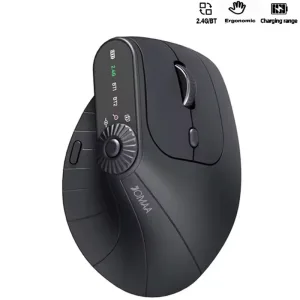

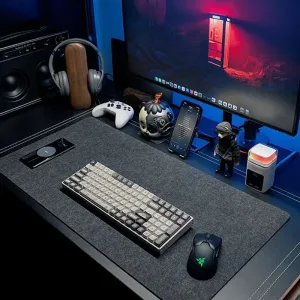
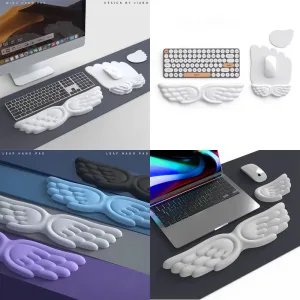
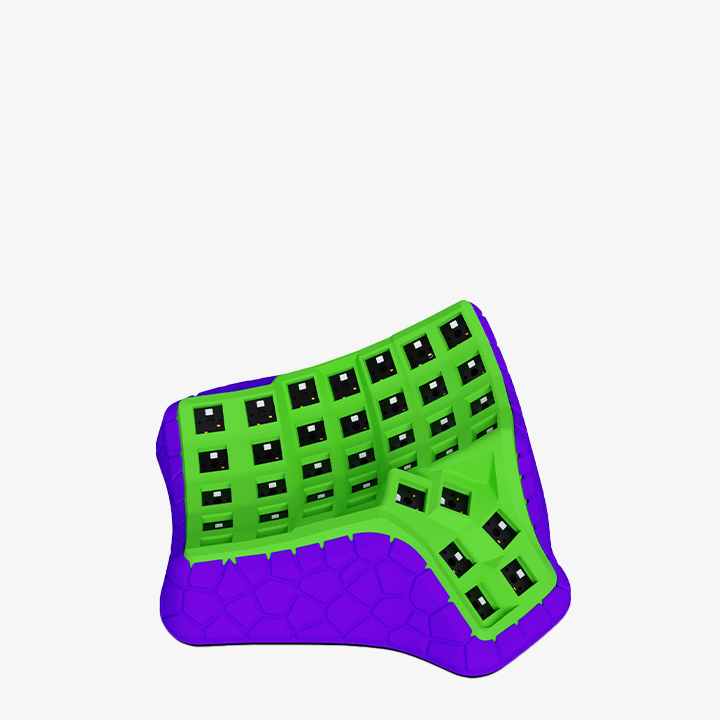
Add comment
You must be logged in to post a comment.